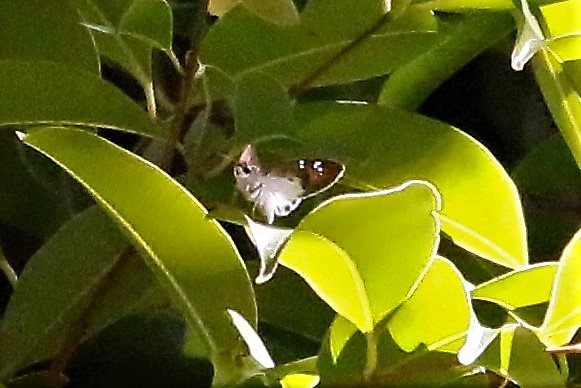In this final 3 part series of butterflies in June 2021, I will highlight those rare and uncommon ones which came out from the deep forest. Its amazing to see these rare insects in a lowland forest without having to venture into a primary forest.
The above skipper is called a Brush Flitter and is reported to be very rare in this region
Its scientific name is: Hyarotis microsticta microsticta It came like a flash of light and landed on a waist high bush for just a couple of shots and then off it went. It was probably traversing from one valley into another and stopped momentarily to see what was this human being up to.
Ultra Snow Flat (Tagiades ultra)
This flat is reported to be uncommon to moderately rare and it was seen in the morning
The above Ultra Snow Flat was however seen way up on the middle of a tall tree.
Silver-spotted lancer / Chequered Lancer (Pastingia naga)
The above skipper is considered as moderately rare.
White Palm Bob (Suastus everyx everyx)
This tiny little skipper was once reported to be very rare in this region.
Abnormal / Strange Sergeant, Athyma clerica clerica (Butler)
The above butterfly is also reported to be rare in this region
The Indigo Flash (Rapala varuna orseis)
It stayed high up on the palm tree and refused to come down to eye level
The above Rapala is considered uncommon
Green Oakblue (Arhopala eumolphus maxwelli)
Although it is uncommon but it is the least uncommon among the green oakblues in this region.
The above male is reported to be uncommon among the ssp.
The above is the more common form of a Malayan Baron (Euthalia monina monina)
The Chocolate Royal (Remelana jangala travana)
Lastly but not least, I finally met again with the enchanting and beautiful Blue Dandy. It is considered rare in this region.
Apparently the scales on a butterfly does not only cover their wings but also their legs and major parts of their body (i.e parts of their thorax, abdomen and even genitalia areas). According to Professor Richard R Ffrench (2018), butterflies which have "Type IIa" scales will have their visual appearance associated with both their ventral and dorsal side of their wings. In other literatures, it was also said that the iridescent blue colors, typically of certain tropical butterflies are generated physically i.e by structural elaboration of the scales. The above does not have any white outline on its wing peripheral.
While this one above has whitish outline on its wings peripheral.
(Note: the above two Laringas are reportedly to be males)
LOOKS LIKE JUNE IS THE MONTH WHEN NATURE WAS AT ITS BEST





















No comments:
Post a Comment